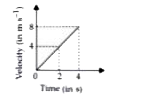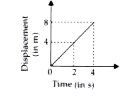A : Inertia depends on the mass of an object.
R : Greater the mass, larger is the force required to change its state of rest or of uniform motion.
If both Assertion & Reason are true and the reason is the correct explanation of the assertion
If both Assertion & Reason are true but the reason is not the correct explanation of the assertion
If Assertion is true statement but Reason is false
If both Assertion and Reason are false statements
Step by step video & image solution for A : Inertia depends on the mass of an object. R : Greater the mass, larger is the force required to change its state of rest or of uniform motion. by Physics experts to help you in doubts & scoring excellent marks in Class 12 exams.
Updated on:21/07/2023Topper's Solved these Questions
- LAWS OF MOTIONBOOK - AAKASH INSTITUTECHAPTER - LAWS OF MOTIONEXERCISE - Assignment (SECTION-C)
63 Videos
- KINETIC THEORYBOOK - AAKASH INSTITUTECHAPTER - KINETIC THEORYEXERCISE - EXERCISE (ASSIGNMENT) SECTION - D Assertion - Reason Type Questions
10 Videos
- MAGNETISM AND MATTER BOOK - AAKASH INSTITUTECHAPTER - MAGNETISM AND MATTER EXERCISE - ASSIGNMENT (SECTION D)
26 Videos
Similar Questions
Knowledge Check
Assertion:Mass is a measure of inertia of the body in linear motion.
Reason: Greater the mass, greater is the force required to change its state of rest or of uniform motion.AIf both assertion and reason are ture and reason is the correct explanation of assertion.BIf both assertion and reason are ture but reason is not the correct explanation of assertion.CIf assertion is ture but reason is false.DIf both assertion and reason are false.The force required to keep a body in uniform circular motion is
ACentripetal forceBCentrifugal forceCResistanceDNone of the aboveThe tendency of a body to resist change in a state of rest or state of motion is called _____
AmomentumBinertiaCforceDvelocity
Name the property of bodies due to which they resist change in their state of rest or state of uniform motion along a straight line.
View SolutionWhy does an object of greater mass experience more friction than an object of lesser mass?
View SolutionA : Acceleration of an object in uniform motion is zero.
R : No force is required to move an object uniformly
View SolutionVelocity time graph of an object of mass 2kg is shown in figure. The force required to move the object for first four seconds is

View SolutionDisplacement time graph of an object of mass 2kg is shown in figure. The force required to move the object for first four seconds is

View Solution
